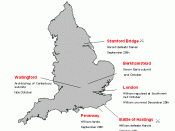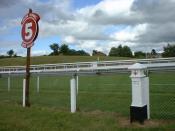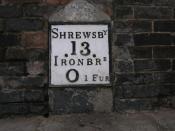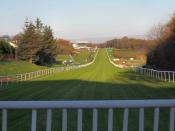A furlong is a traditional measure of distance, originating in Anglo-Saxon England, within Imperial units and U.S. customary units. Although its definition has varied historically, in modern terms it equals 40 rods, poles, or perches, which is exactly 10 chains, 220 yards, 660 feet, or 1/8 of a statute mile. One furlong is exactly 201.168 meters, so a 200-meter dash covers a distance very close to a furlong. Coincidentally, 5 furlongs is 1005.84 meters (exactly) and is therefore approximately 1 kilometer.
The name "furlong" derives from the Old English words furh (furrow) and lang (long). The word "furlong", from the Old English fuhrlang, means "the length of a furrow" and refers to the length of a furrow in the common field characteristic of medieval farming; it represents the distance a team of oxen could plow without needing a rest. It originally referred to the length of the furrow in one acre of a ploughed open field (a medieval communal field which was divided into strips).
The system of long furrows arose because turning a team of oxen pulling a heavy plough was difficult. This offset the drainage advantages of short furrows and meant furrows were made as long as possible. For this reason, it was once also called an acre's length.
Distances for thoroughbred horse races in the United Kingdom, Ireland and the United States are given alternately in miles and furlongs, but the unit is otherwise no longer in common use --and even in that discipline, its usage is confined mainly to denoting distances of less than one mile.
Long before the Norman Conquest in 1066, Saxon farmers in England were measuring distance in rods and furlongs and areas in acres.
Its official use was abolished in the United Kingdom under the Weights and Measures Act 1985, which also abolished from official use many other traditional units of measurement.





